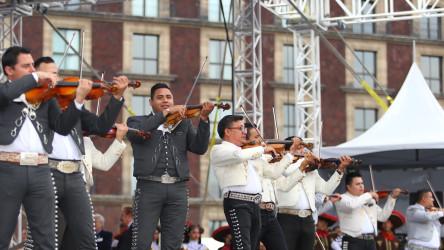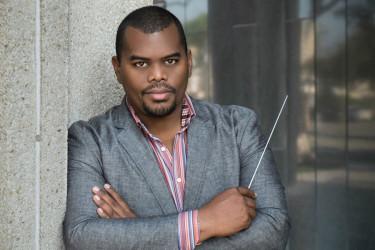
Photo by Kaupo Kikkas
A pair of violin concertos that were almost lost forever appear on a new album with Randall Goosby and the Philadelphia Orchestra. Composer Florence Price died in 1953, but a trove of her works was discovered more than fifty years later in a house where she had once lived. Yannick Nézet-Séguin and the Philadelphia Orchestra are in the process of recording all of her orchestral works, and Goosby played the concertos with them live in concert last fall.
“It was a surreal experience to have the opportunity to introduce the whole world of listeners to music that’s been around for over half a century, but hasn’t really been heard at all. It’s very rare, and something that I’m really grateful for,” Goosby says. “And of course having the chance to do so with an orchestra like Philly and a conductor like Yannick, it’s once in a lifetime.”
They had only worked together once before, at the Saratoga Music Festival in New York the previous summer, where he played the Bruch Violin Concerto (which is also on the new recording).
“It was a little bit of a stressful experience,” he explains, “in the sense that it was a live recording, and all of the takes that we had were live concerts. So we did four nights, four concerts, both concerti on each concert, and those were the takes that we had to work with. It’s not often that that kind of energy that’s exchanged between performers and audience members is captured on a recording, so having the opportunity to do that with these particular concerti was really special… and having that kind of experience and that kind of passion for Florence Price onstage with me made it all that much more special.”
“These concerti, both of them, were part of the collection of music that was discovered in her former home in 2009. So over 50 years went by without these concerti being touched. And now all of a sudden they’re available worldwide on a commercial record release. I’m just really honored, and I hope that the listeners get as much pleasure from these recordings as I did from playing them.”
Given the circumstances under which she was working, as a Black woman composer in the first half of the 20th Century, he says it’s a testament to her abilities that we know of her at all. “With Price, we don’t have letters from every week in her life the way we do for, say, a Mozart or a Brahms. Price’s story is one that most people in classical music probably can’t relate to on a personal level… Black America, when Price was doing her thing, was a very different place than it is now. Price’s Symphony No. 1 was premiered by the Chicago Symphony in the 1930s. And I think knowing that, considering what the times were like back then, I think it says a lot about her acumen, and about her prowess as a composer. And yet, we’re still hearing this music for the first time. So I take it very seriously, the responsibility of continuing to carry on this music’s legacy, because it’s long overdue.”
The recording also includes an orchestral arrangement of Price’s “Adoration,” a piece that Goosby has played in recitals.
Goosby says pairing these two “new” works with Max Bruch’s very well-known concerto brings together two sides of him as a player, and as a person. “Bruch has been on my Mount Rushmore of concerti since I was a kid. That was part of the reason I wanted to include it on this album, because Price and her story and her legacy are also part of my story as an African-American. So the parts of her experience that I relate to are the parts that most people don’t. And those are really what I’m trying to communicate in her concerti. And so, in a way, it’s two equally important parts of who I am as an artist that are featured on this album. But to have an orchestra like Philly, and the richness and lushness of that sound, to me was almost made for the Bruch concerto, so having a chance to do that as well, was just an added bonus.”








